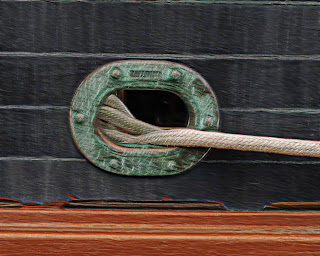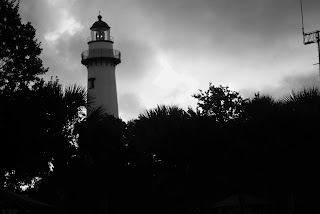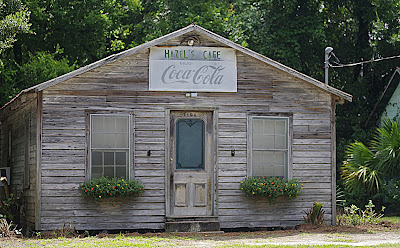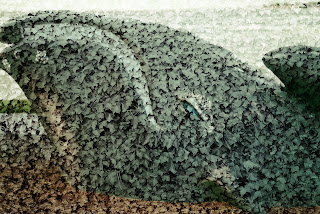Tall ship berth in
Brunswick, Ga at Mary Ross Park, named Peacemaker, a barquenline
sailing vessel. Built in Brazil to be a charter vessel in 1989 and
brought to Savannah Ga. To be finished. No work was started and
after 8 years the ship was sold to the Twelve Tribes Communities.
The ship was finished in 2008. It has a 33’ beam, 14’ draft and
displaces 400 tons.
Glynn County Courthouse
located at 701 G Street
Brunswick, Ga. The cornerstone was laid on
27 Dec 1906 and completed on 18 December 1907 costing $97,613. The
Glynn County Courthouse is a fine example of Neoclassical Revival
style architecture and combines ancient Greek and Roman forms with
Renaissance ideas. The courthouse stands impressively among the moss
draped live oaks, Magnolia,
in addition to trees of foreign origin including Tung and
Chinese pistachio. perched on a cushion of
green grass.
http://www.courthouses.co/us-states/states-a-g/georgia/glynn-county/
The
building faces south and is a two story buff colored brick and
stone structure. The south front has a large portico supported by
four large columns rising to a wide header. Above the header is a
balustrade. There are east and west wings which extend slightly from
the main building. On the center of the roof is a octagonal open
sided white dome with clock at the top and green colored roof.
Facts
- The courthouse rests on 350 concrete pilings.
- The building uses a 2.5-inch by 13.5-inch floor joist system.
- After a recent renovation ,the main courtroom was restored to its original appearance. The balcony was restored and the twin chandeliers were rewired and refurbished.
- The courthouse has heart pine wood floors.
- The building rests on 24-inch thick granite footers.
- Fire Insurance maps indicate this building is 40 feet to the main roof line.
- During the energy crunch of the 70`s, the ceiling on the second floor courtroom was lowered to 12 feet, hiding the balcony area.
- The original price to construct the building was $65,000. The 723 registered voters overwhelmingly passed a bond issue by a margin of 481 to 8 to make up the additional $50,000 the courthouse would cost.
- The upstairs courtroom has 32 foot "cathedral ceilings".
- The grand staircase is made of Granite.
- Lighting was provided by gas lights, but later replaced by electricity.
- The courthouse has 2-inch thick oak interior doors.
Saint Simons Lighthouse
Fort
St. Simons was the first structure to occupy this land, although an
earlier fort (Delegal's) existed in the area. Fort St. Simons was
built to watch for Spanish invaders, and was captured by the Spanish
in 1742. It was from this site that the Spanish began to probe St.
Simons Island looking for a rumored second fort built by Oglethorpe
(Ft. Frederica). Troops searching for Frederica initiated the Battle
of Bloody Marsh, fought on the island during the War of Jenkins Ear.
In
the early 1800's a plantation owner, James Couper, purchased the land
and renamed it Couper's Point. He deeded four acres to the federal
government for 1 dollar to build a lighthouse. The first structure
75-feet tall octagonal in shape topped by a 10-foot oil burning lamp.
The construction begun in 1807 by James Gould, was made of tabby, a
common building material on the island at the time. Gould took three
years to complete the project, then served as the first lighthouse
keeper.
During
the American
Civil War, U.S.
military forces employed a Naval
blockade of
the coast. An invasion by Union troops in 1862
forced Confederate soldiers
to abandon the area. The retreating troops destroyed the lighthouse
to prevent it from being an aid to the navigation of Union warships.
The U.S.
government constructed
a new lighthouse to replace the original, building it to the west of
the original's location. It is a 104-foot (32 m) brick structure
completed in 1872,
In
1890 the lighthouse was converted from whale oil lamps to kerosene
lamps. In 1934 an electric line was run to the lighthouse, which used
electricity to illuminate the island from that point on. The original
third-order Fresnel lens is still there in operation at the St.
Simons lighthouse as it shines its light out to sea for a distance of
eighteen miles. I
The
rotating lens projects four beams of light, with one strong flash
every 60 seconds. A cast
iron spiral
stairway with 129 steps leads
to the galley (or
watch/service room).
The
sturdy keepers’ house, designed to withstand the worst of storms,
has walls that are twelve inches thick. It housed the keeper,
assistant keeper, and their families. This was a typical living
situation during that time, but later lighthouse builders built a
separate house for each family. This one-house-two-families situation
didn’t always work out very well and often caused trouble. In March
1880, an argument between lighthouse keeper Frederick Osborne and his
assistant left Mrs. Osborne a widow. After this incident, the central
staircase was removed in the early 1900s, and additional stairs were
put on the outside to better accommodate other families and put some
space between them.
May
2019 marked the 25th year that the volunteer light keepers of the
United States Coast Guard Auxiliary St Simons Island took on the
responsibility from the Coast Guard active duty to maintain the
iconic, heavily visited, working Lighthouse’s official Aid to
Navigation (ATON) located in the village on St Simons Island, GA.
Hazel Café
Hazel
and Thomas Floyd opened the cafe in 1947, banking on the post-war
economic boom to generate business. Boy, did it. Hazel’s Cafe
already was an iconic relic when it finally closed its doors to
customers in 1978, some 40 years ago.
Thomas
was from Hazelhurst, arriving on St. Simons Island after serving in
the Army during World War II (1941-45). He was a darned good cook.
Hazel was an island native, ready for a change of pace after having
worked in Brunswick’s Liberty Ship yards during the war years.
Together, the couple whipped up a recipe for success that would feed
the community for three decades.
Right whale sculpture
A North Atlantic Right Whale and her baby surface out of the ground. Sculpted in 1995 by Keith Jennings.
Uniola
paniculata, also known as sea oats, seaside oats,
araña, and arroz de costa, is a tall subtropical
grass that is an
important component of coastal sand
dune and beach
plant communities in the southeastern
United States, eastern Mexico and some Caribbean
islands. Its large seed heads that turn golden brown in late summer
give the plant its common name. Its tall leaves trap wind-blown sand
and promote sand dune growth, while its deep roots
and extensive rhizomes
act to stabilize
them, so the plant helps protect beaches and property from damage due
to high winds, storm
surges and tides.
It also provides food and habitat for birds, small animals and
insects.
https://en.wikipedia.org/wiki/Uniola_paniculataFern Overvold
Atlanta Branch
Tall and slender
the sea oats
bow to one another
without breaking.
Something in their sandy
shoes allows them to
tilt from their toes,
lean West with the wind
at sunrise, and stand
straight again at vespers.
the sea oats
bow to one another
without breaking.
Something in their sandy
shoes allows them to
tilt from their toes,
lean West with the wind
at sunrise, and stand
straight again at vespers.
Like graceful old ladies
with a crown of seeds
dry at summer’s end,
they drop each kernel
for tomorrow’s purpose—
binding the sand
holding the dunes
saving the shore.
with a crown of seeds
dry at summer’s end,
they drop each kernel
for tomorrow’s purpose—
binding the sand
holding the dunes
saving the shore.

















No comments:
Post a Comment